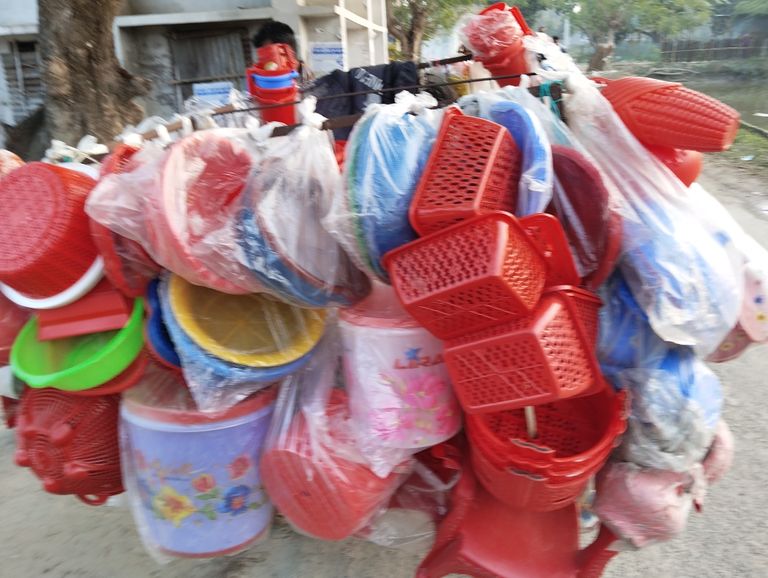
The Process of Making Plastic A Complete Guide.
Plastics are an essential part of modern life, used in everything from packaging and electronics to medical devices and construction materials. But have you ever wondered how plastic is made? In this blog, we’ll explore the entire plastic manufacturing process, from raw materials to the final product.
What is Plastic?
Plastic is a synthetic material made from polymers—large molecules composed of repeating subunits. These polymers are derived mainly from petrochemicals, but some plastics are also made from renewable sources like corn starch and sugarcane.
Types of Plastics
Plastics are categorized into two main types:
- Thermoplastics – These plastics can be melted and reshaped multiple times. Examples include polyethylene (PE), polypropylene (PP), and polyvinyl chloride (PVC).
- Thermosetting Plastics – These plastics harden permanently after being heated and molded, making them more durable. Examples include epoxy resin and phenolic resin.
Raw Materials for Plastic Production
Most plastics are made from crude oil and natural gas. The key raw materials include:
Ethylene (derived from oil or gas)
Propylene
Butadiene
Styrene
Benzene
For biodegradable plastics, raw materials like corn starch, sugarcane, and vegetable oils are used.
Step-by-Step Process of Making Plastic
- Extraction of Raw Materials
The production of plastic begins with the extraction of crude oil or natural gas. These raw materials are processed in refineries to separate useful hydrocarbons like ethylene and propylene, which are essential for making plastic.
- Polymerization
In this step, small molecules (monomers) are chemically bonded to form long polymer chains. There are two primary types of polymerization:
Addition Polymerization – Monomers are linked together without producing byproducts. Example: Polyethylene (PE).
Condensation Polymerization – Monomers bond while releasing a small molecule, usually water. Example: Nylon.
- Compounding and Additives
Once polymers are formed, various additives are mixed in to enhance properties like strength, flexibility, and color. Common additives include:
Plasticizers – Improve flexibility.
Stabilizers – Prevent degradation from heat and UV light.
Colorants – Provide desired colors.
Flame Retardants – Reduce flammability.
- Molding and Shaping
The processed plastic is now ready to be shaped into different products using various molding techniques. The most common methods include:
a. Injection Molding
Molten plastic is injected into a mold and cooled to form a solid shape.
Used for making toys, bottle caps, and automotive parts.
b. Extrusion Molding
Plastic is heated and pushed through a shaped die to create continuous shapes like pipes, straws, and sheets.
c. Blow Molding
Used for making hollow objects like plastic bottles and containers.
Air is blown into the heated plastic to form the desired shape.
d. Rotational Molding
A mold is rotated while the plastic solidifies, forming large, hollow products like water tanks.
- Cooling and Finishing
After shaping, the plastic is cooled and solidified. The finished products may undergo:
Trimming – Removing excess plastic.
Polishing – Enhancing surface quality.
Printing and Labeling – Adding designs, logos, or product information.
- Quality Control and Testing
Before being sent to the market, plastic products undergo testing for:
Strength and durability
Heat and chemical resistance
Flexibility and elasticity
Biodegradable and Eco-Friendly Plastics
With growing environmental concerns, manufacturers are shifting towards sustainable plastics like:
PLA (Polylactic Acid) – Made from corn starch and sugarcane.
PHA (Polyhydroxyalkanoates) – Produced by bacteria.
Recycled Plastics – Made from previously used plastic materials.
Plastic manufacturing is a complex process involving multiple steps, from extracting raw materials to final product finishing. While plastic is a highly useful material, its environmental impact has led to the development of biodegradable and recycled alternatives. By understanding how plastic is made, we can make more informed choices about its use and disposal. Would you like to learn more about plastic recycling methods? Let us know in the comments.
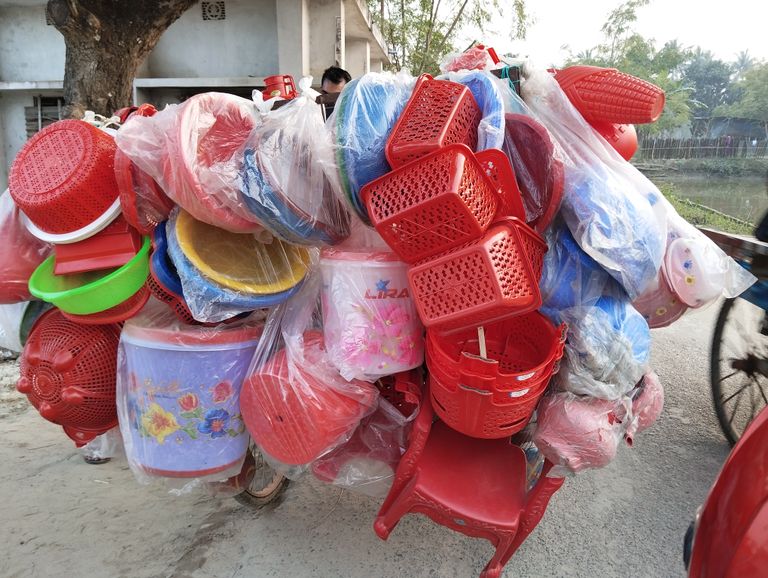
The Use of Plastic Products: Benefits, Risks, and Sustainable Alternatives
Introduction
Plastic products have become an integral part of modern life. From packaging and household items to medical equipment and industrial materials, plastics are everywhere. Their lightweight, durability, and affordability make them highly convenient. However, the excessive use of plastic has led to severe environmental and health concerns. In this blog, we will explore the benefits and drawbacks of plastic use and discuss sustainable alternatives that can help reduce plastic pollution.
The Advantages of Plastic Products
- Affordability and Accessibility
Plastic is inexpensive to produce, making it a cost-effective material for manufacturers. This affordability allows people from all economic backgrounds to access plastic-based products.
- Durability and Versatility
Plastics are highly durable and resistant to water, chemicals, and corrosion. They can be molded into various shapes and sizes, making them suitable for diverse applications, including packaging, electronics, automobiles, and medical devices.
- Lightweight and Energy Efficient
Due to their lightweight nature, plastic products reduce transportation costs and fuel consumption. This efficiency lowers carbon emissions compared to heavier alternatives like glass and metal.
- Medical and Healthcare Benefits
Plastic is widely used in the medical industry for making syringes, IV bags, surgical gloves, and prosthetics. These materials help maintain hygiene and save lives in healthcare settings.
- Food Preservation
Plastic packaging extends the shelf life of food products by protecting them from contamination and spoilage. Vacuum-sealed plastic bags and containers help reduce food waste.
The Negative Impact of Plastic Use
- Environmental Pollution
Plastics are non-biodegradable, meaning they take hundreds or even thousands of years to decompose. Improper disposal leads to plastic waste accumulating in landfills, oceans, and natural habitats, harming wildlife and ecosystems.
- Marine Life Destruction
Plastic waste, especially microplastics, is a significant threat to marine life. Animals like turtles, fish, and seabirds mistake plastic debris for food, leading to fatal consequences. Millions of marine animals die each year due to plastic ingestion and entanglement.
- Health Hazards
Plastics contain harmful chemicals such as Bisphenol A (BPA) and phthalates, which can leach into food and water. Long-term exposure to these chemicals is linked to hormonal imbalances, reproductive issues, and cancer.
- Greenhouse Gas Emissions
The production and disposal of plastic contribute to greenhouse gas emissions. Plastic is made from fossil fuels like petroleum and natural gas, and burning plastic waste releases toxic gases that contribute to climate change.
- Microplastic Contamination
Microplastics are tiny plastic particles that contaminate soil, water, and even the air. These particles enter the food chain and can pose serious health risks to humans and animals. Studies have found microplastics in drinking water, seafood, and even human organs.
Sustainable Alternatives to Plastic
- Biodegradable and Compostable Plastics
Eco-friendly plastics made from plant-based materials such as cornstarch, sugarcane, and algae decompose faster than traditional plastics. These alternatives can significantly reduce plastic waste.
- Reusable Products
Switching to reusable items like cloth bags, glass bottles, and metal straws can minimize plastic consumption. Consumers should prioritize long-lasting materials over single-use plastics.
- Paper and Bamboo Packaging
Businesses can replace plastic packaging with biodegradable materials like paper, bamboo, and jute. These materials break down naturally and do not harm the environment.
- Recycling and Upcycling
Encouraging recycling programs and waste segregation can help manage plastic waste effectively. Upcycling old plastic products into useful items can also reduce environmental impact.
- Government Policies and Regulations
Governments worldwide are implementing plastic bans, taxes, and recycling initiatives to curb plastic pollution. Stricter regulations on plastic production and disposal can encourage businesses to adopt sustainable practices.
Conclusion
Plastic products have revolutionized industries and made life more convenient, but their negative environmental and health impacts cannot be ignored. By adopting sustainable alternatives, promoting recycling, and enforcing stricter policies, we can reduce plastic pollution and create a cleaner, healthier planet. It is crucial for individuals, businesses, and governments to work together to minimize plastic waste and embrace eco-friendly solutions. The future of our environment depends on the choices we make today. Reducing plastic use and adopting sustainable alternatives is not just a necessity—it is our responsibility.
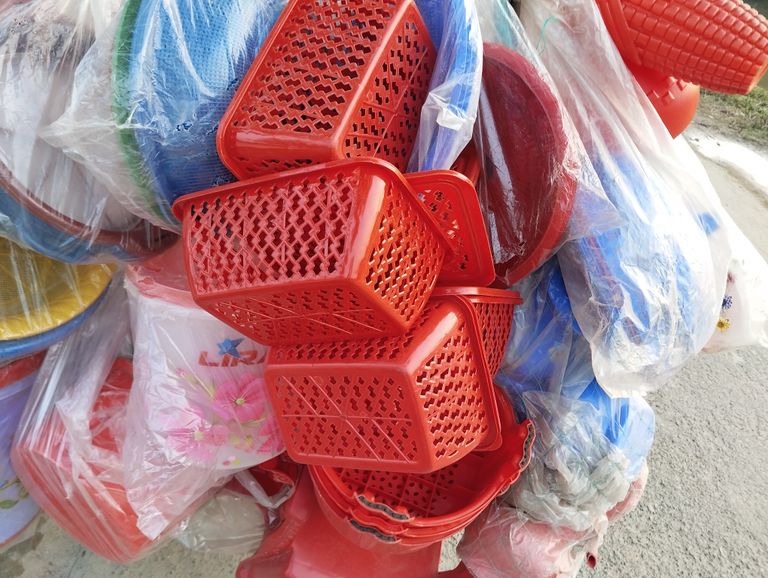
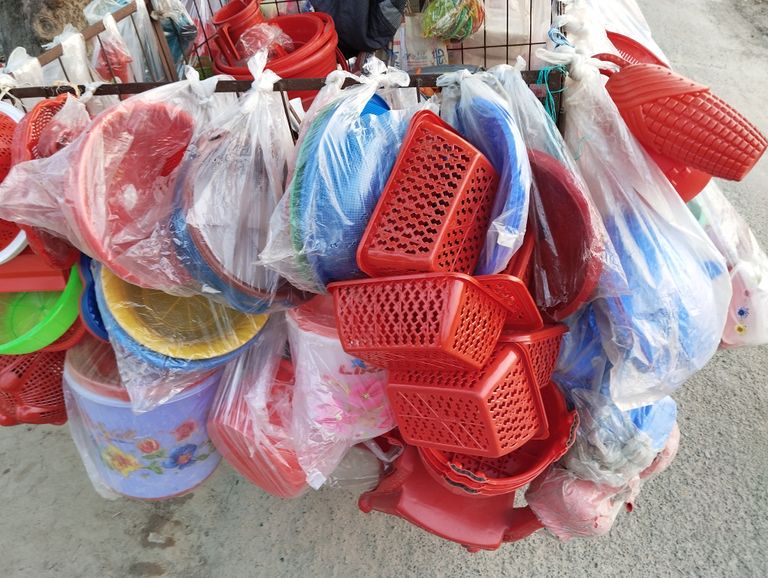
Starting a Profitable Plastic Business: A Complete Guide
Plastic is an essential material in modern industries, making the plastic business highly lucrative. From packaging to household products, the demand for plastic is immense. If you are considering starting a plastic business, this guide will help you understand the opportunities, investment requirements, and potential profits.
- Why Start a Plastic Business?
The plastic industry offers many advantages:
High Demand: Plastic is used in almost every sector, including food packaging, construction, and healthcare.
Profitability: A well-planned plastic business can generate significant profits.
Scalability: You can start small and expand over time.
Multiple Business Opportunities: You can manufacture, recycle, or trade plastic products.
- Types of Plastic Businesses
You can enter the plastic industry in different ways:
a) Plastic Manufacturing
You can produce plastic products like bags, containers, and bottles. Some popular segments include:
Household items (buckets, mugs, storage boxes)
Packaging materials (plastic wraps, food containers)
Industrial parts (pipes, automotive parts)
b) Plastic Recycling Business
Recycling plastic is both profitable and environmentally friendly. The process involves:
- Collecting plastic waste
- Sorting and cleaning
- Melting and reshaping into new products
c) Plastic Raw Material Trading
Instead of manufacturing, you can buy and sell plastic raw materials like:
Plastic pellets (granules)
Resins
PVC compounds
- Investment & Equipment Required
The investment depends on your chosen plastic business type. Below is an estimate:
- Step-by-Step Guide to Starting Your Plastic Business
Step 1: Research & Business Plan
Study market demand and competitors
Choose your niche (manufacturing, recycling, or trading)
Estimate costs, pricing, and profits
Plan marketing and distribution
Step 2: Legal Formalities
Register your business
Get necessary licenses (environmental and manufacturing permits)
Comply with safety and recycling regulations
Step 3: Setting Up Production
Purchase equipment and raw materials
Hire skilled workers
Set up manufacturing and storage facilities
Step 4: Marketing & Sales
Create a brand and logo
Use social media and online marketplaces
Partner with retailers and wholesalers
Offer discounts for bulk buyers
- Profit Potential in Plastic Business
The profit margin in the plastic industry varies depending on product type and scale. Here's an estimate:
A small-scale business can earn $2,000 - $10,000 per month, while larger businesses can generate $50,000+ monthly profits.
- Challenges & How to Overcome Them
Environmental Concerns: Invest in biodegradable plastic or recycling.
Government Regulations: Stay updated on plastic bans and compliance.
Competition: Offer unique designs, better quality, or lower prices.
- Future of the Plastic Industry
With innovations in biodegradable plastics and recycling technologies, the industry will continue to grow. Investing in sustainable plastic solutions can give you a competitive edge.
Final Thoughts
The plastic business is a profitable and scalable venture. Whether you choose manufacturing, recycling, or trading, success depends on proper planning, quality products, and effective marketing.
Would you like help in choosing the right plastic business model for you? Let’s discuss.
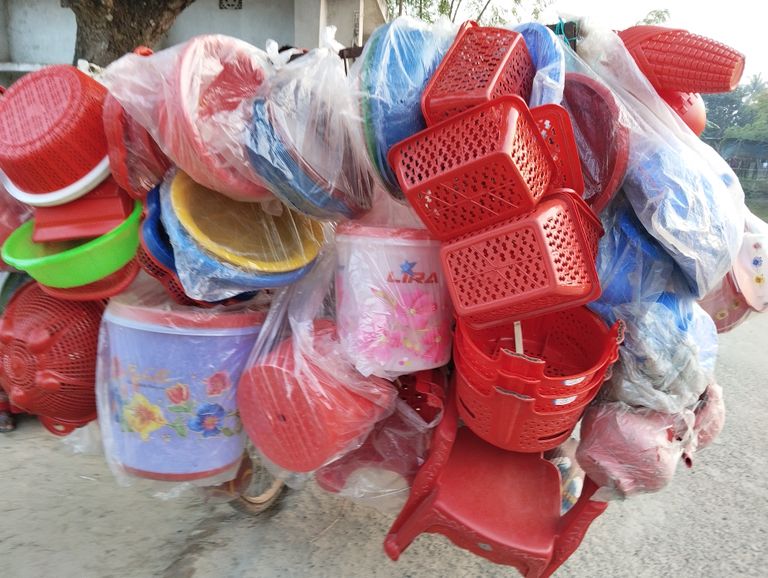
The Plastic Factory: A Deep Dive into Manufacturing, Impact, and Future
Introduction
Plastic is an integral part of modern life. From packaging and household products to medical devices and industrial components, plastic is everywhere. Behind the production of plastic products lies the plastic factory—an essential part of the global supply chain. In this blog, we will explore how a plastic factory operates, the types of plastics produced, its environmental impact, and the future of plastic manufacturing.
- How a Plastic Factory Works
A plastic factory is a manufacturing facility where raw plastic materials are processed into usable products. The production process generally follows these steps:
a) Raw Material Selection
Plastic factories use different types of raw materials, primarily derived from petroleum and natural gas. Common types of raw plastics include:
Polyethylene (PE) – Used for plastic bags, bottles, and containers.
Polypropylene (PP) – Found in food packaging, automotive parts, and medical devices.
Polyvinyl Chloride (PVC) – Used in pipes, cables, and flooring.
Polystyrene (PS) – Used for disposable cups, plates, and insulation.
Polyethylene Terephthalate (PET) – Found in beverage bottles and food containers.
b) Manufacturing Process
The production of plastic products involves several key steps:
- Compounding – Mixing raw plastic resins with additives like colorants, stabilizers, and reinforcements to enhance properties.
- Molding – Shaping the plastic using various molding techniques:
Injection Molding – Melting plastic and injecting it into a mold to create solid objects like bottle caps and electronic housings.
Blow Molding – Used to make hollow objects like bottles and containers.
Extrusion – Producing continuous shapes like pipes and sheets.
Thermoforming – Heating plastic sheets and shaping them using molds.
- Cooling & Finishing – Once the plastic is shaped, it is cooled, trimmed, and prepared for final use.
- Quality Control – Each product undergoes inspection for defects, strength, and consistency.
- Environmental Impact of Plastic Factories
While plastic is convenient and cost-effective, its production and disposal pose serious environmental challenges.
a) Carbon Emissions & Pollution
Plastic manufacturing involves high energy consumption, leading to greenhouse gas emissions. Factories often release pollutants into the air and water, affecting local communities and ecosystems.
b) Waste Generation & Recycling Challenges
Non-biodegradability – Most plastics take hundreds of years to decompose.
Microplastics – Tiny plastic particles pollute oceans and harm marine life.
Low Recycling Rates – Only a small percentage of plastic waste is effectively recycled.
c) Health Concerns
Plastic production releases harmful chemicals like dioxins, phthalates, and bisphenol A (BPA), which can cause respiratory problems, hormonal disruptions, and other health issues.
- The Future of Plastic Manufacturing
As concerns over plastic pollution grow, factories are adapting new technologies and sustainable practices to reduce environmental impact.
a) Biodegradable & Bio-based Plastics
Innovations in biodegradable plastics made from plant-based materials like corn starch and sugarcane offer eco-friendly alternatives.
b) Advanced Recycling Techniques
Chemical Recycling – Breaking down plastic into raw materials for reuse.
Closed-loop Systems – Factories designing products that can be easily recycled and reprocessed.
c) Energy-efficient Production
Many factories are adopting renewable energy sources like solar and wind power to reduce carbon emissions.
d) Government Regulations & Industry Initiatives
Governments worldwide are imposing bans on single-use plastics and encouraging sustainable production. Companies are also investing in circular economy models to minimize waste.
Plastic factories play a crucial role in modern industry, but they also contribute to pollution and waste. With the rise of sustainable technologies and responsible manufacturing, the future of plastic production can be more eco-friendly. By supporting recycling initiatives and biodegradable alternatives, we can move towards a greener and more sustainable world.
The Plastic Factory: A Deep Dive into Manufacturing, Impact, and Future
Introduction
Plastic is an integral part of modern life. From packaging and household products to medical devices and industrial components, plastic is everywhere. Behind the production of plastic products lies the plastic factory—an essential part of the global supply chain. In this blog, we will explore how a plastic factory operates, the types of plastics produced, its environmental impact, and the future of plastic manufacturing.
- How a Plastic Factory Works
A plastic factory is a manufacturing facility where raw plastic materials are processed into usable products. The production process generally follows these steps:
a) Raw Material Selection
Plastic factories use different types of raw materials, primarily derived from petroleum and natural gas. Common types of raw plastics include:
Polyethylene (PE) – Used for plastic bags, bottles, and containers.
Polypropylene (PP) – Found in food packaging, automotive parts, and medical devices.
Polyvinyl Chloride (PVC) – Used in pipes, cables, and flooring.
Polystyrene (PS) – Used for disposable cups, plates, and insulation.
Polyethylene Terephthalate (PET) – Found in beverage bottles and food containers.
b) Manufacturing Process
The production of plastic products involves several key steps:
- Compounding – Mixing raw plastic resins with additives like colorants, stabilizers, and reinforcements to enhance properties.
- Molding – Shaping the plastic using various molding techniques:
Injection Molding – Melting plastic and injecting it into a mold to create solid objects like bottle caps and electronic housings.
Blow Molding – Used to make hollow objects like bottles and containers.
Extrusion – Producing continuous shapes like pipes and sheets.
Thermoforming – Heating plastic sheets and shaping them using molds.
- Cooling & Finishing – Once the plastic is shaped, it is cooled, trimmed, and prepared for final use.
- Quality Control – Each product undergoes inspection for defects, strength, and consistency.
- Environmental Impact of Plastic Factories
While plastic is convenient and cost-effective, its production and disposal pose serious environmental challenges.
a) Carbon Emissions & Pollution
Plastic manufacturing involves high energy consumption, leading to greenhouse gas emissions. Factories often release pollutants into the air and water, affecting local communities and ecosystems.
b) Waste Generation & Recycling Challenges
Non-biodegradability – Most plastics take hundreds of years to decompose.
Microplastics – Tiny plastic particles pollute oceans and harm marine life.
Low Recycling Rates – Only a small percentage of plastic waste is effectively recycled.